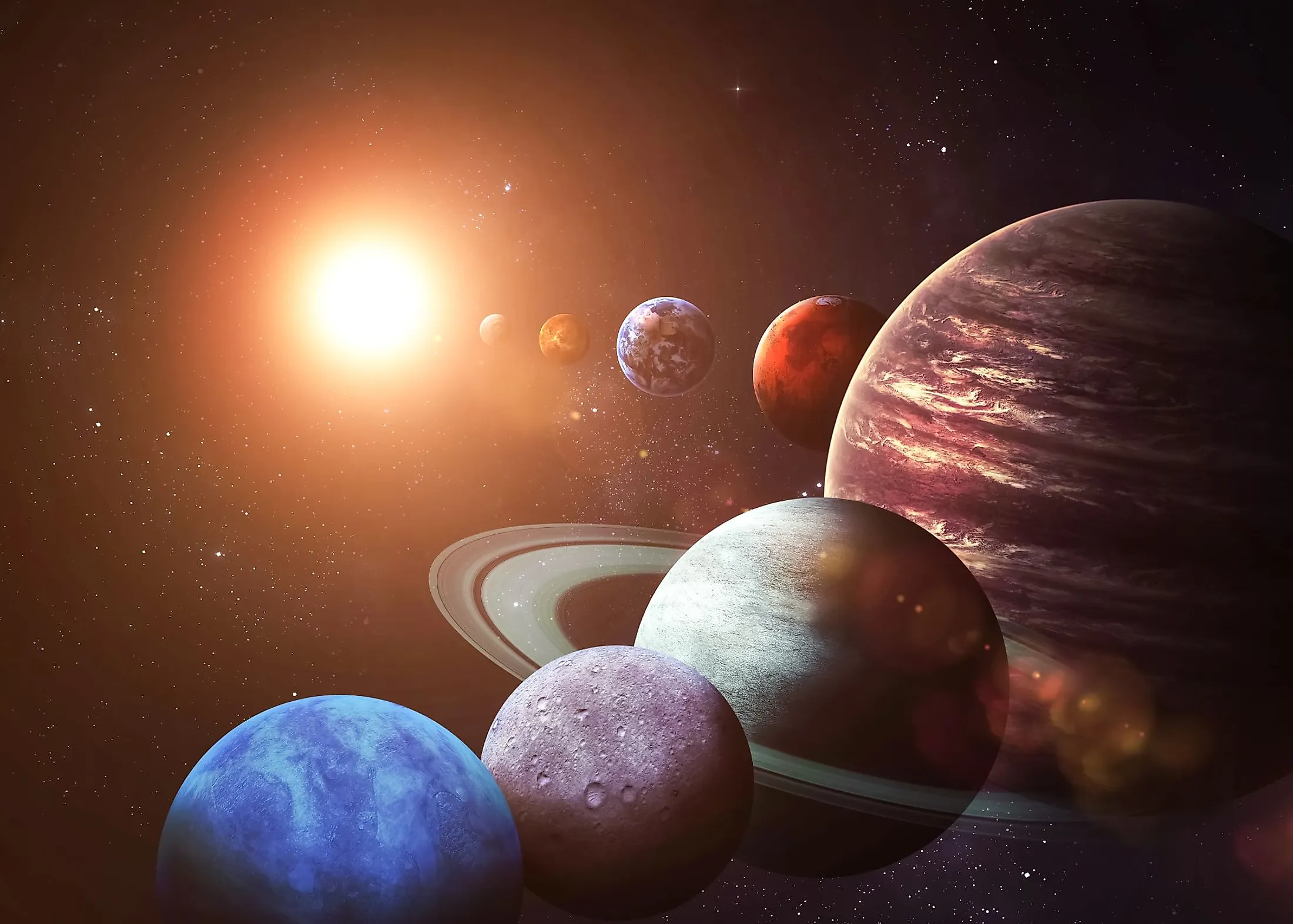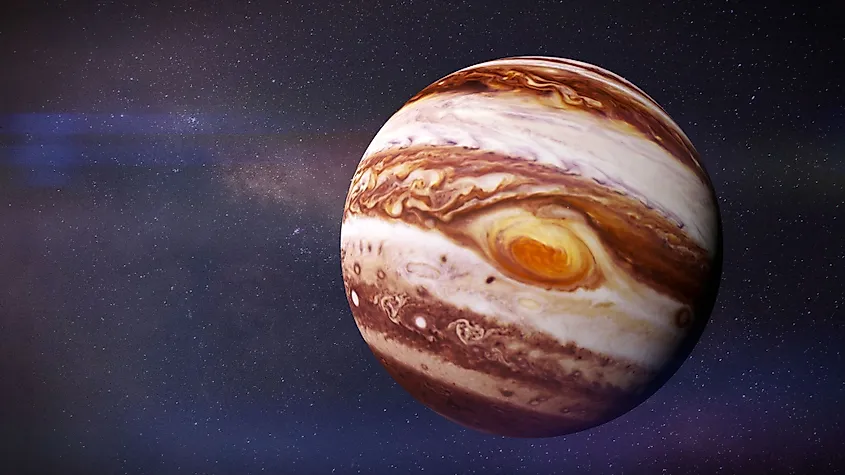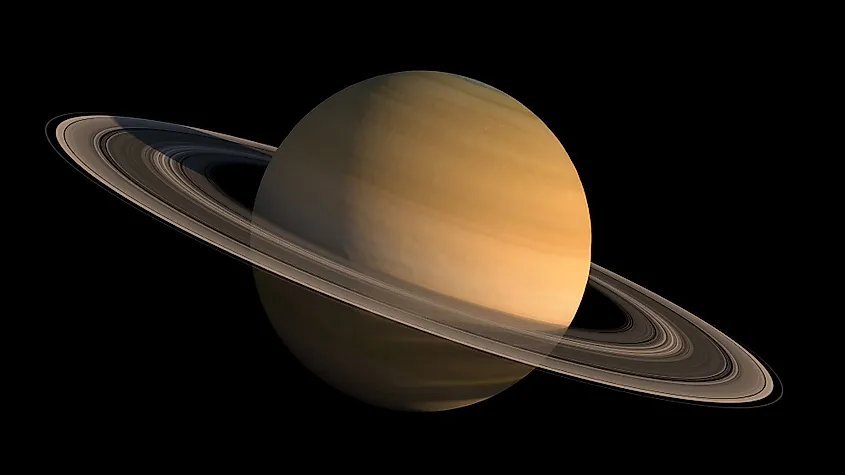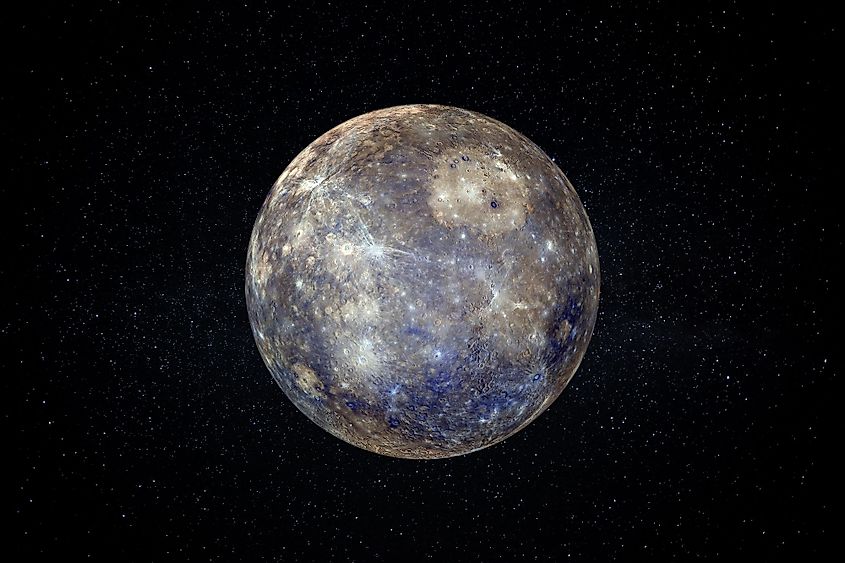
Which Planet In Our Solar System Has The Most Gravity?
Each of the eight planets in our solar system has its own gravitational pull, whose strength is related to its mass. The smaller a planet's mass, the weaker its gravity. In addition to mass, density also plays a role. A planet can be massive, but if its density is low, its gravitational pull may not be quite as strong as one would expect. The Earth forms the basis of our understanding of the gravitational force on other worlds. It is much easier to compare the gravitational pull of other planets to the Earth as it is something we experience in our lives. To calculate the strength of gravity on a planet, we can calculate the rate at which an object will fall due to gravitational acceleration. On Earth, this rate is 9.81 meters per second square. What that means is that a falling object will fall 9.81 meters for every second it's falling, assuming there's no air resistance. It is important to note that for the gas giants, which do not have a solid surface, the force of gravity on the surface is defined as the force of gravity in the upper layers of the atmosphere. Of all the planets in the solar system, how does their gravity compare?
The Most Massive Planet

Jupiter is the biggest planet in our solar system, and so it also has the strongest gravitational field among all the planets. The only celestial object whose gravitational pull exceeds that of Jupiter is the Sun. Jupiter is roughly 318 times the mass of Earth, yet its surface gravity is not 318 times as strong. Despite its immense mass, the force of gravity on the surface of Jupiter is only about twice and a half times as strong as Earth’s, or 24.8 meters per second square. Jupiter has such relatively low gravity compared to its mass because it isn’t a very dense planet. Jupiter is mainly made up of the two lightest elements - hydrogen and helium. Since Jupiter is composed almost entirely of light elements, it has a low density and thus a low surface gravity as well. A 100-pound object would weigh roughly 250-pounds on Jupiter.
Surface Gravity Of The Gas Giants

How does the gravitational pull of each planet compare to Earth’s? We have already mentioned Jupiter, but there are still six other planets to compare. If you were to somehow stand in the upper layers of Saturn’s atmosphere, you would experience a gravitational pull that is slightly stronger than Earth’s. If you were to drop an object, it would accelerate downwards at 10.44 meters per second square. Like Jupiter, Saturn’s relatively small surface is due to its low density. In fact, Saturn is the least dense planet in the solar system, and it has lower surface gravity than Neptune.
Uranus is about 14.5 times more bigger than Planet Earth, yet its surface gravity is actually lower than Earth’s. This is because, like all the other gas giants, the density of Uranus is relatively low, and so the surface gravity you would experience would be weaker than Earth’s. If you were to drop an object through the cloud-tops of Uranus, it would accelerate downwards at 8.69 meters per second square.
Neptune is the furthest planet from the Sun and is about 17 times the mass of Earth. As a gas giant, Neptune has a very low density and thus a relatively low surface gravity. Without any air resistance, an object dropped from Neptune’s upper atmosphere would fall at a rate of 11.15 meters per second squared. The surface gravity on Neptune is 1.14 times that on Earth.
Surface Gravity Of The Rocky Worlds

The closest planet to the Sun, Mercury, is also the smallest and least massive planet in the solar system. Mercury is only 0.055 times the mass of Earth, yet despite that small number, Mercury experiences a surprisingly strong surface gravity thanks to its high density. If you were to stand on the surface, you would experience a gravitational force of 3.7 meters per second squared, or about 0.38 times the surface gravity on Earth.
The nearest planet to Earth is Venus, and it also happens to be nearly the same size and mass as Earth. Venus is about 95% the size of Earth and 80% as massive. On the surface, the acceleration due to gravity is 8.87 meters per second squared, or about 0.9 times the surface gravity on Earth. The surface gravity on Venus is slightly larger than that on Uranus.
Mars is similar to Earth in many ways, but it is a lot smaller in size and mass. Mars is only 0.1 times the mass of Earth, and its surface gravity is not much larger than Mercury’s. Mars is a fairly dense planet, and so its surface gravity is probably larger than you would expect. On the surface, you would experience a gravitational pull of 3.71 meters per second square, or about 0.38 times Earth's surface gravity.











